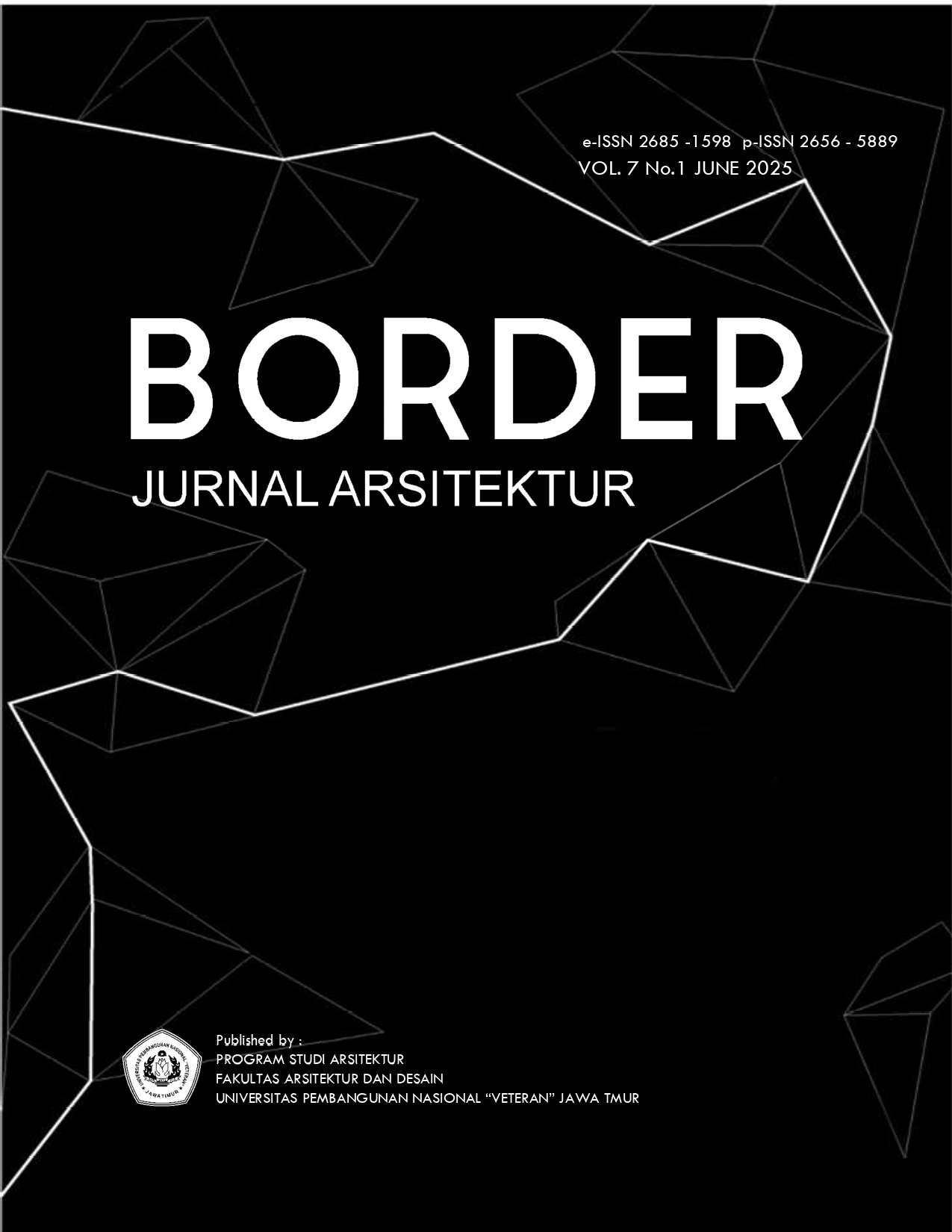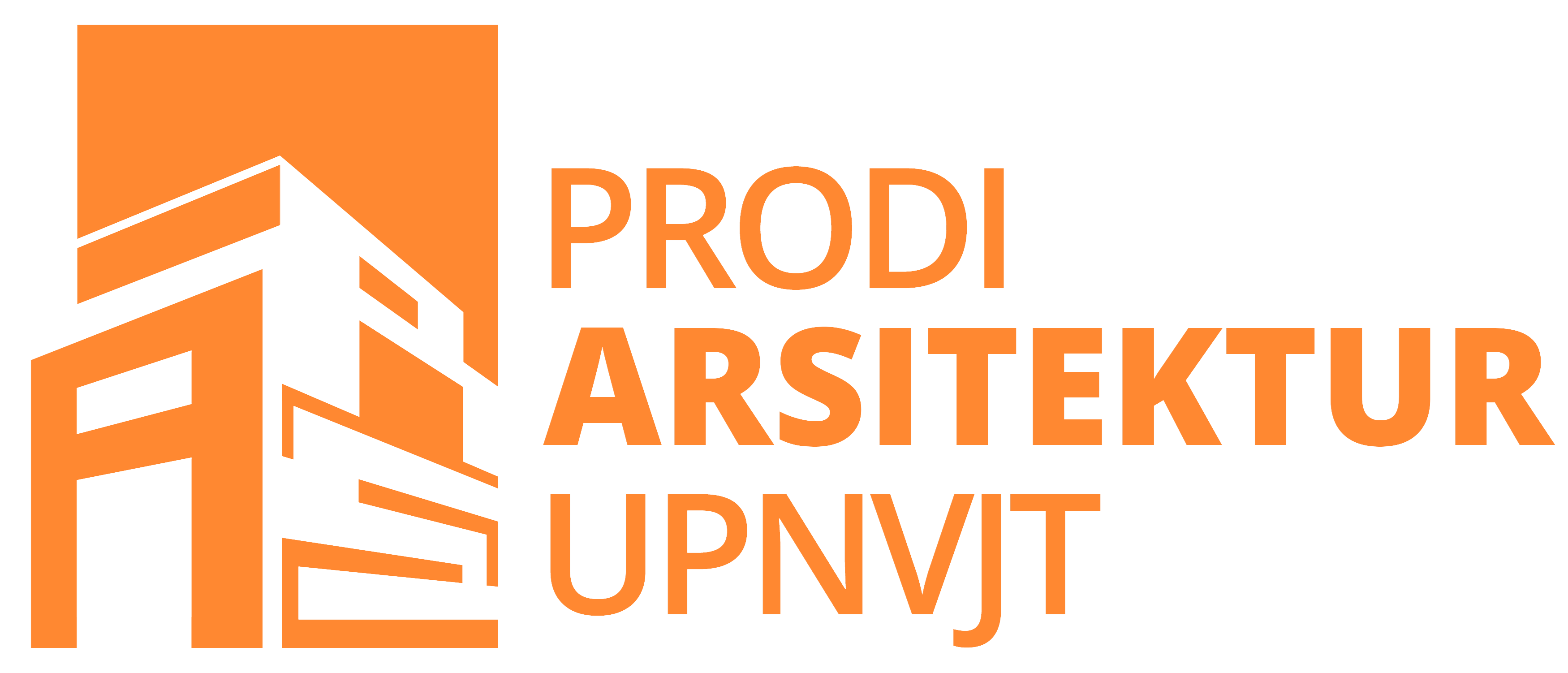A STUDY ON THE THERMAL COMFORT OF TRADITIONAL MALAY HOUSES IN SAMBAS CITY
DOI:
https://doi.org/10.33005/border.v7i1.1186Keywords:
Computational Fluid Dynamics (CFD), Thermal comfort, TradAbstract
External threats such as animals, climate change, and weather conditions are commonly known factors that determine the house's primary function, which is to provide shelter and protection. The structural characteristics of the architecture of the traditional Malay House are unique in their distinctive construction techniques, design elements, functions, and decorative features. These houses, passed down through generations, have historically served as essential spaces for communal living. Thermal comfort in buildings refers to physical and physiological satisfaction, often assessed using empirical equations. This study evaluates the thermal comfort levels of traditional Malay houses in Sambas City. A descriptive quantitative approach is employed, utilizing Computational Fluid Dynamics (CFD) simulations conducted through Autodesk Inventor software to analyze indoor airflow patterns. Additionally, on-site measurements investigation is employed using an anemometer to assess wind speed, a hygrometer to determine humidity levels, and a thermometer to measure air temperature. The findings indicate that none of the case study houses meet the thermal comfort standards established by KEMENKES (Indonesian Ministry of Health) and SNI (Indonesian National Standard). As a result, residents often experience discomfort and resort to artificial ventilation at specific times to improve indoor conditions.
Downloads
References
Adianti, I., & Vidya, A. N. (2024). The effect of building orientation on facades in the line of Baluwarti Building, Kraton Yogyakarta. Border: Jurnal Arsitektur, 1(1), 1–10. https://doi.org/10.33005/border.v1i1.7
Andriano, S. (2018). Evaluasi Kenyamanan Spasial Dan Visual Ruang Pejalan Kaki Koridor Jalan Soekarno- Hatta (Studi Kasus: Koridor Jalan Soekarno-Hatta, Malang). Universitas Brawijaya.
Badan Standarisasi Nasional (BSN). (1993). SNI T-14-1993-03: Standar Tata Cara Perencanaan Teknis Konservasi Energi pada Bangunan Gedung (SK SNI T-14-1993-03). SK SNI T-14-1993-03.
Badan Standarisasi Nasional (BSN). (2001). SNI 03-6572-2001: Tata Cara Perancangan Sistem Ventilasi dan Pengkondisian Udara pada Bangunan Gedung. Badan Standardisasi Nasional.
Chariyah, R. (2017). Aplikasi Kenyamanan Termal pada Bangunan Arsitektur Biomimikri untuk Mendukung Efisiensi Energi (Studi Kasus bangunan Watercube dan Eastgate Centre). Energi Efficient for Sustainable Living, 87–101.
Dewi, F. G. U. (2012). Pengaruh Kecepatan Dan Arah Aliran Udara Terhadap Kondisi Udara Dalam Ruangan Pada Sistem Ventilasi Alamiah. Jurnal Rekayasa Mesin, 3(2), 299–304.
Edar, A. N., & Wahyuni, A. (2021). Pengaruh Suhu dan Kelembaban Terhadap Rasio Kelembaban dan Entalpi (Studi Kasus: Gedung UNIFA Makassar. LOSARI: Jurnal Arsitektur Kota Dan Pemukiman, 6(2), 102–114.
Hermawan, Prianto, E., & Setyowati, E. (2018). Studi Lapangan Variabel Iklim Rumah Vernakular Pantai Dan Gunung Dalam Menciptakan Kenyamanan Termal Adaptif. Jurnal Arsitektur Zonasi, 1(2), 96–105.
Hidayat, W. (2011). Aplikasi Langgam Arsitektur Melayu Sebagai Identitas Kawasan Menuju Kota Berkelanjutan. Local Wisdom, III(2), 27–32.
Jagdale, P.R. & Chaudhary, A. B.(2021). Computational Fluid Dynamics, An Overview. International Research Journal of Engineering and Technology (IRJET), 08(09), 1817-1821.
Karyono, T. H. (2010). Kenyamanan Termal Dan Penghematan Energi: Teori Dan Kenyamanan Termal Dan Penghematan Energi: Teori dan realisasi dalam desain arsitektur. Seminar dan Pelatihan Ikatan Arsitek Indonesia (IAI) (pp. 1–10). Ikatan Arsitek Indonesia (IAI).
Mandaka, M., & Wardianto, G. (2020). Renovasi Rumah Tinggal Tidak Layak Huni Menuju Rumah Sehat Di Kelurahan Tinjomoyo Semarang. Majalah Inspiratif, 5(10), 1–15.
Martín-Chivelet, N., Polo, J., & Olivieri, L. (2025). Renovation of Typological Clusters with Building-Integrated Photovoltaic Systems. Energies, 18(6), 1394.
Mclntyre, D. A. (1980). Indoor Climate. Applied Science Publishers.
Kementerian Kesehatan Republik Indonesia (2011). Peraturan Menteri Kesehatan Republik Indonesia Nomor 1077/MENKES/PER/V/2011. Kementerian Kesehatan Republik Indonesia.
Monica, C., Purnomo, Y., & Zain, Z. (2022). Airflow Evaluation In Classroom During Covid-19 Pandemic. DIMENSI: Journal of Architecture and Built Environment, 49(2), 117–121. https://doi.org/DOI: 10.9744/dimensi.49.2.117-122
Nugroho, S. (2011). Study of Adaptation Simulation on Termal Comfort-Ableness Level Caused by Global Climate Change on Padang. Widyariset. Widyariset, 14(3), 549–558.
Olgyay, V. (1973). Design with Climate: Bioclimatic Approach to Architectural Regionalism. Princeton University Press.
Tim Dosen STT Jaffray. (2016). Metodologi Penelitian Pendidikan Teologi (H. Wijaya (ed.)). Sekolah Tinggi Theologia Jaffray Makassar.
Zain, Z. (2003). Sistem struktur rumah tradisional Suku Melayu di Kota Sambas Kalimantan Barat. Universitas Gajah Mada.
Zain, Z., & Oktafiansyah, M. A. (2023). Identifikasi Klimatik Tropis Arsitektur Tradisional Rumah Tinggal Suku Melayu Terhadap Kenyamanan Termal. Jurnal Arsitektur NALARs, 22(1), 1–8. https://doi.org/https://doi.org/10.24853/nalars.22.1.1-8
Downloads
Published
How to Cite
Issue
Section
License
Copyright (c) 2025 Border: Jurnal Arsitektur

This work is licensed under a Creative Commons Attribution 4.0 International License.

















